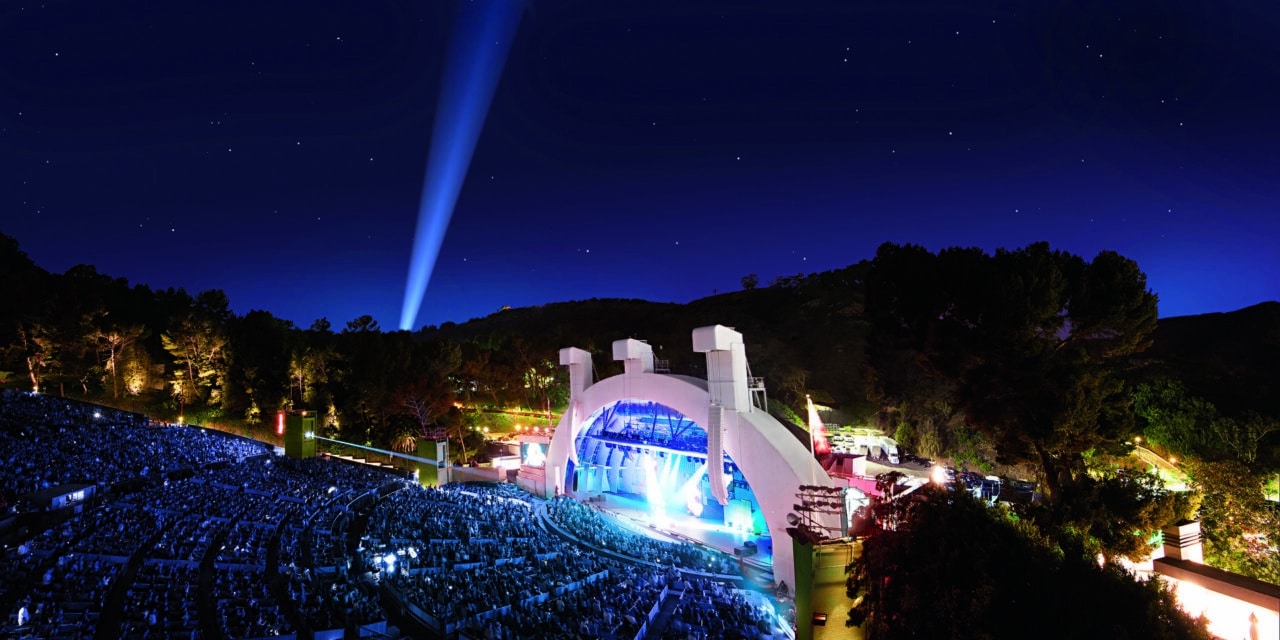BOWLED OVER: The picturesque Hollywood Bowl in Los Angeles is among the world’s most iconic venues. (Courtesy Los Angeles Philharmonic Association)
At Century Mark, History-Rich Shed As Vital As Ever
LOS ANGELES — Billed as the world’s largest natural amphitheater, the famed Hollywood Bowl has hosted the biggest stars in classical, jazz and pop over the past century: Luciano Pavarotti, The Beatles, Pink Floyd, Paul Simon, Frank Sinatra, Peggy Lee, Yitzhak Perlman, Yehudi Menuhin, Jimi Hendrix, the Grateful Dead, Rod Stewart, the Eagles, Ella Fitzgerald. Tom Petty and the Heartbreakers’ last performance was at the Bowl five years ago.
The list goes on and so does the magic of a spot in the Hollywood Hills once called Daisy Dell.
The bowl’s famed bandshell, though changed through the decades, is instantly recognizable by its concentric arches and distinctive Streamline Moderne architecture, a sub-genre of Art Deco.
From the highest seats in the bowl, where the iconic Hollywood sign comes into view, to the premium boxes where guests enjoy a deluxe picnic-style experience the Bowl has lived up to its motto of “music for everyone.”
Even today, there are $1 seats available for midweek classical performances put on by the Los Angeles Philharmonic Association, which manages the venue on behalf of Los Angeles County, and buses are chartered to bring in guests from all corners of Greater LA.
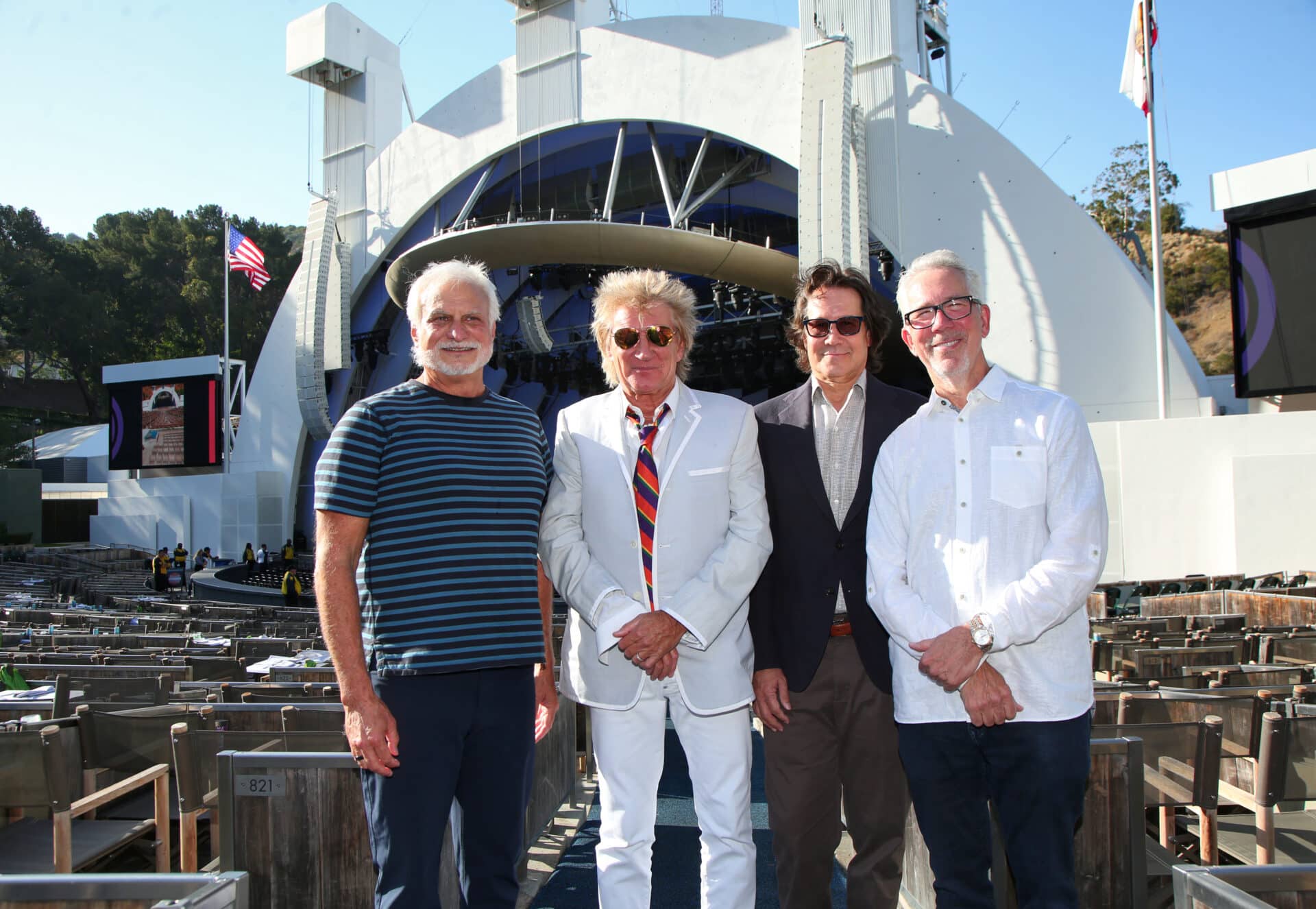
Getting The Band Back Together: Bill Silva and Andrew Hewitt have been promoting shows at the Hollywood Bowl for more than 30 years. Pictured with the trio at a recent gig is Live Nation’s Rick Franks. (Randall Michelson)
“The mission is to open the doors of the Hollywood Bowl to everyone in LA County, regardless of race, gender, income and we really do think about that when we are doing our programming,” said General Manager Laura Connelly. “Our seasons are eclectic every year, and we have this amazing bus program that we run which has between 30% and 40% ridership on any one concert and we make that opportunity to use the buses as affordable as possible. We still have $1 seats Tuesdays, Wednesdays, Thursdays and we are proud of the fact that we are able to still offer that. Can you imagine going to see a show for a dollar? It’s crazy.”
The word magic often comes up while discussing the Hollywood Bowl with attendees and the venue’s workforce. Among them is Live Nation Senior Vice President for Los Angeles Booking Brian Smith. He grew up in the nearby San Fernando Valley and rode the bus to the Hollywood Bowl to catch the Beach Boys and once saw a performance of the cantata Carmina Burana, based on 24 poems from the Middle Ages.
“Then as a teenager, I’d see Morrissey, later Radiohead (when) I was in my 20s. It was probably Bill and Andy’s shows when I started going to a bunch of rock stuff,” Smith said, referring to Bill Silva and Andrew Hewitt. Together, they have promoted shows at the bowl for 31 years and since 2018 have partnered with Live Nation.
“I saw that last Tom Petty and the Heartbreakers show (on Sept. 25, 2017) and I’ve seen a lot of them,” he said. “I thought, ‘This is the greatest artist and the greatest band. There is some magic there. There was just something about him at the Bowl.’ I’ve been to a few shows that were like that. It’s an extraordinary place with extraordinary expectations.”
Petty died a week after the Heartbreakers closed out that three-show run with a rousing rendition of “American Girl.”
Hewitt recalls seeing the Grateful Dead at the Bowl in 1974 and taking in a Sonny and Cher show before he turned 10. It wouldn’t be his last encounter with the oft-retired megastar.
On the production values of the Bowl: “It’s a massive stage (the shell is a third larger than the previous one) and it’s got an unbelievable sound system (from L-Acoustics), great lighting and most tours augment it with their own,” Smith said. “It can be turnkey. Van Morrison comes in and he uses everything and it’s great or they can do a massive multi-truck show with Backstreet Boys and it all works seamlessly.”
The historic bandshell has been through several iterations through the decades. At one point, the plan was to design a new structure for every season, before common sense dictated otherwise. Before the current bandshell debuted in 2004, the previous structure, which sat on rails and could be moved to stage right, had been in place since 1929.
Between the classical, pop and other shows put on by the LA Phil and those promoted by Live Nation, the Hollywood Bowl typically hosts just over 100 shows each year, Connelly said.
“The bulk of the dates are in the summer, six nights a week,” she said. (The shoulder months) of April, June and October, we have Live Nation-Hewitt Silva events and we kind of average around 108 shows combined.”
 SHELL OF A SHED
SHELL OF A SHED
The latest version of the shell — the bowl’s fifth — has had a profound impact on the types and total number of productions that could stage shows at the facility, according to Silva. Improvements included a ramp and loading dock leading directly to the stage.
“It’s increased because it’s so much easier for the touring artists to put their productions in,” he said. “The LA Philharmonic really planned ahead in expanding the shell in this latest renovation they did. A lot of shows just couldn’t logistically make it into the bowl based on how many days it would take to set up and tear it down. The Philharmonic likewise is seeing similar success with artists able to be more creative with their shows and easier to facilitate.”
Hewitt said, “The shell is an interesting story because it was a partnership between Los Angeles County Supervisor Zev Yaroslavsky and the late (LA Philharmonic Association Executive Director) Ernest Fleischmann. Ernest had the desire for a new shell and had the architect and Zev wanted to do it and there was a bond initiative for billions of dollars.”
Yaroslavsky helped push for an increase in the budget to ensure there was enough money to get the project done, due in part to the strong partnership between the county and the orchestra.
“Supervisor Yaroslavsky felt it was important to not just have the Philharmonic but to have The Rolling Stones,” Hewitt said. “So, Bill and I had to work very hard to make sure we had The Stones a few years back.”
PROPITIOUS PARTNERSHIPS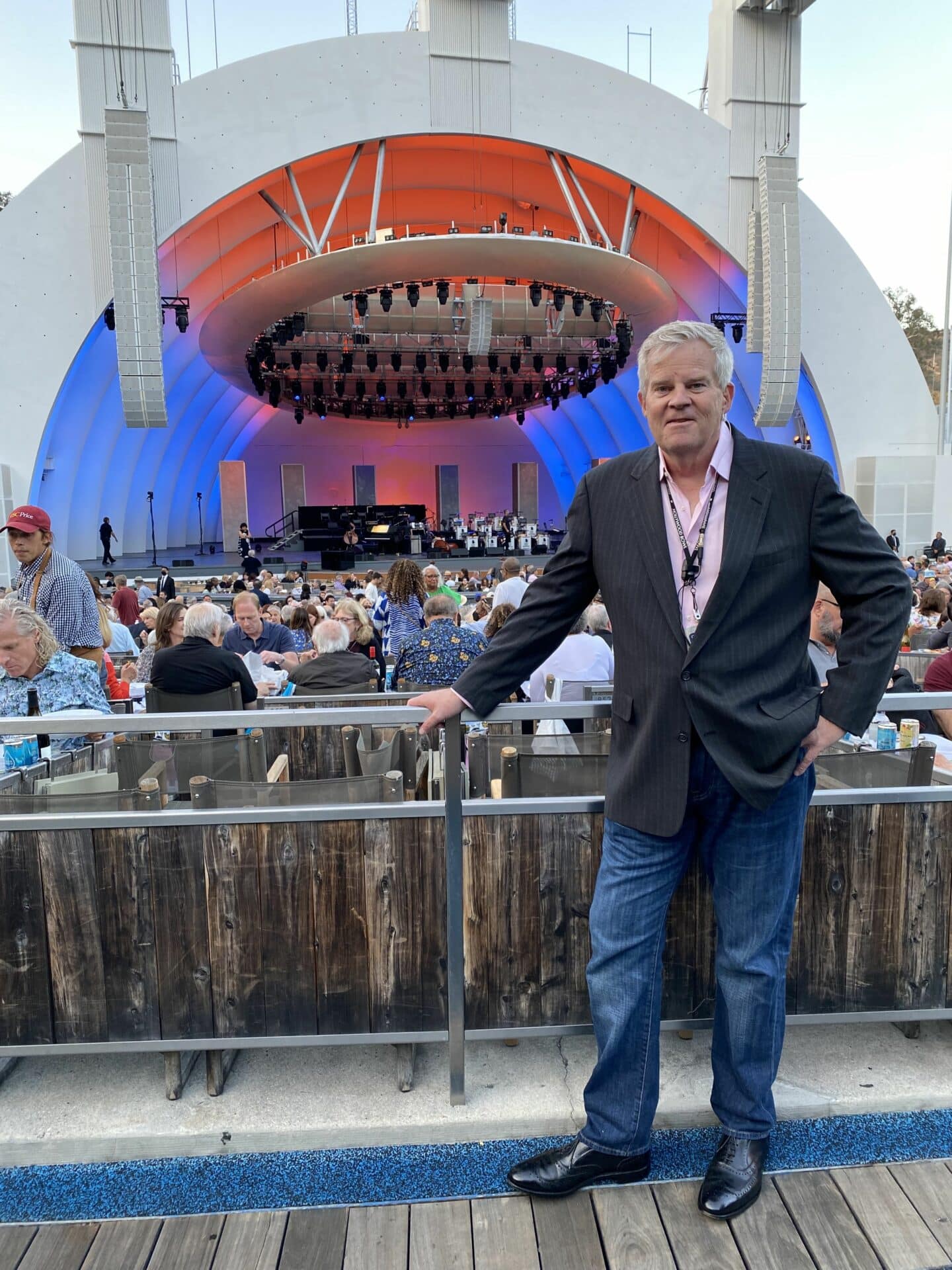
That partnership and the Hollywood Bowl’s location in a county park has worked well over the years, Connelly said.
“We’ve had this long-standing partnership with the county that you don’t have at other venues,” she said. “It’s maintained by the county and managed by the LA Philharmonic Association. It’s helped to make the Hollywood Bowl what it is. You’ve got this certain Streamline Moderne architecture that we’ve tried to keep with all the buildings and any new upgrades that we do. We have that amazing fountain at the entrance. A statue called the Muse of Music, designed by George Stanley, who did the Oscar statuette, is part of that fountain. If it hadn’t been a county property, I don’t know that we would have had that kind of history and had that be part of the fabric of what the place is.”
The 200-foot Muse of Music, Dance and Drama fountain, which sits at the venue’s Cahuenga Boulevard entrance, was designed by Stanley and constructed in 1940,from granite quarried from nearby Victorville. It was commissioned in 1939 as a Federal Arts Project, part of the the Depression-era Works Progress Administration.
It was refurbished in 2006, said Mark Ladd, associate director of Hollywood Bowl operations, who’s worked at the venue for over 40 years after stints at Los Angeles Memorial Coliseum and crowd management firm Contemporary Services Corporation, which has the contract at the Bowl.
From 1954-1972, the Bowl featured a 100,000-gallon reflecting pool that separated the stage from the audience, but it was removed after overly exuberant fans made a practice of jumping into it.
That section is now one of the Bowl’s most exclusive, with fine dining available at some shows.
Introducing the venue to new artists and audiences is something Hewitt and Silva relish. Case in point is the June 4 show by Rex Orange County, an English singer-songwriter, which Silva called one of the most important events he and Hewitt have promoted at the venue in years.
“The audience was parents bringing their 16-year-olds, singing at the top of their lungs to every song,” he said. “It’s exciting to see the ushering in of a new era of an audience and great new musicians. They play their own instruments, write their own music. There’s a horn section. It’s very musical. It was exciting and produced the highest merchandise numbers we’ve seen at the Bowl by almost a factor of double the best before that. The only ones out there doing better merch than this kid would be Harry Styles.”
Silva said he sometimes has to explain to artists the value of playing the Hollywood Bowl even though ticket prices might have to be set a bit higher than other sheds, and he again cited Rex Orange County as a good example.
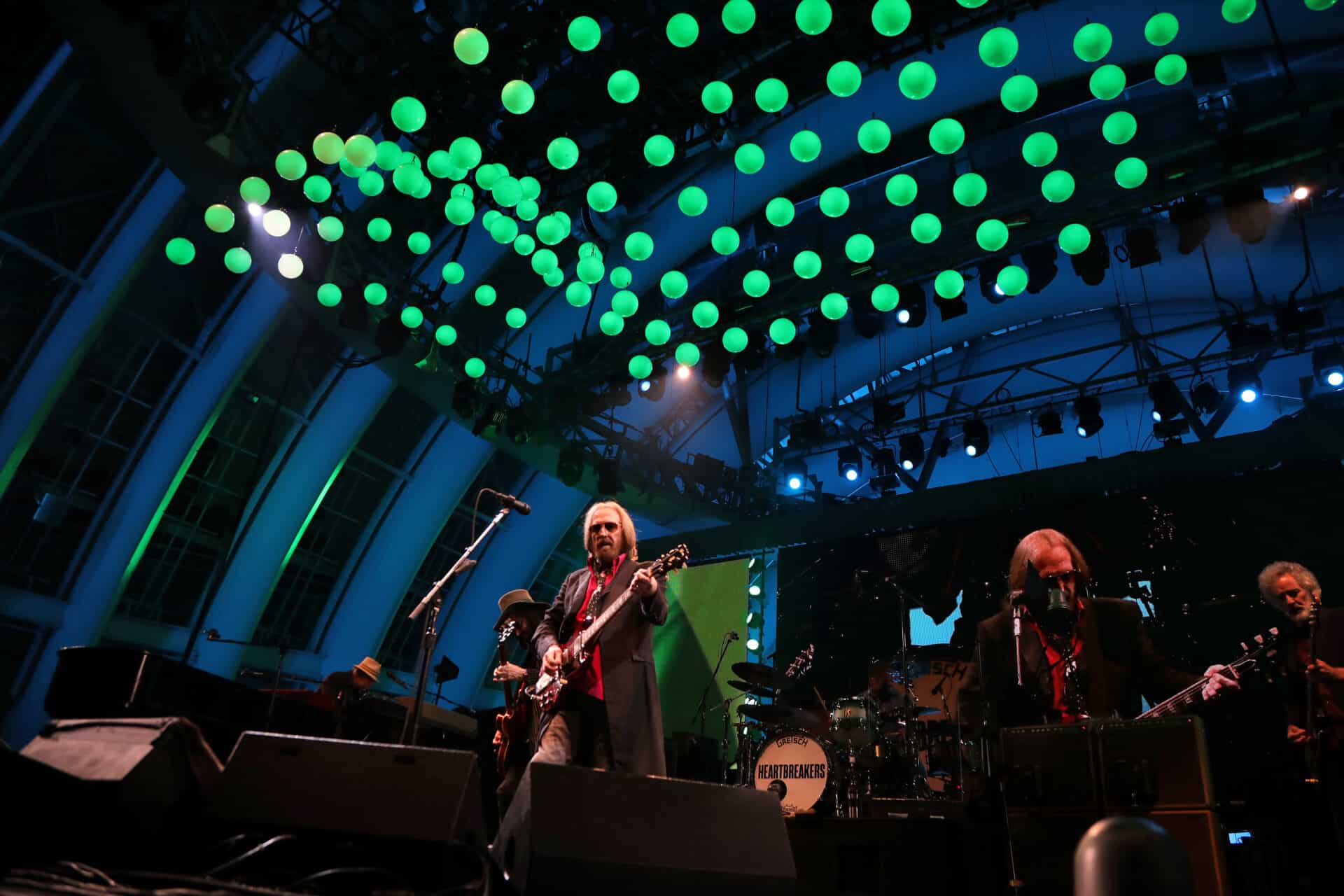
Last Dance: The Hollywood Bowl was the site of Tom Petty’s final performance, Sept. 25, 2017. (Randall Michelson)
“You’ve got a very astute young manager (Jonathan Dinkins) who’s wildly successful with his other client, Adele, and who recognizes the value of planting the flag in iconic venues and making a statement,” he said. “What an exciting night to see that audience experience the bowl just like a young Andy Hewitt did when he was seeing Sonny and Cher.”
Hewitt added, “The first concert I went to was Sonny and Cher and the Turtles at the Hollywood Bowl, which Cher has always found amusing when we were involved with one of her many farewell tours.”
“The promoter saw her when he was six,” Silva quipped.
Most rock and pop shows booked this year, with a lineup that includes Dave Matthews, Jack Johnson, The Who, Pet Shop Boys with New Order, Florence and the Machine, Wu Tang Clan with Nas, Yeah Yeah Yeahs, Rüfüs Du Sol, Zac Brown Band and Smashing Pumpkins with Jane’s Addiction, have sold out or gone nearly clean, Smith said.
“It’s an easy sell. The wind is at your back there. The Gorge (in eastern Washington) is beautiful. Red Rocks (outside Denver) is a great shed, but there is just no venue in the world like the Hollywood Bowl.”
Agents of artists who can fill the place prioritize playing the Hollywood Bowl when they come through Los Angeles in the summer, according to all promoters working with the venue.
“It’s easily the most in-demand venue that we work with,” Smith said.
“A lot of artists route their tours to include the Bowl. It’s an important place for many artists who can fill it up. When you’re looking at where you want to play, you’re often using an anchor — ‘Where’s that important play?’— and then we route around it.
The bowl is often that play.”
“It’s undeniably iconic and beautiful,” he said. “It sits right in the middle of Hollywood (whereas many sheds are not in an urban center) and I don’t discount that there is magic in that place,” Smith said.
“You can feel it when you are in there and the sun goes down and the headliner is about to go on. It seems there’s awareness from the artists and the fans that something special is about to happen. Often that leads to an extraordinary show.”
VALUE PROPOSITION
“It’s a marquee venue, for sure, and one of the nice elements is, we can typically illustrate that an artist can sell more tickets at the bowl than other places just because it’s still a more limited offering than other venues. There’s still a season (at) the Hollywood Bowl. It’s not open year-round and we do only so many shows per year. We don’t do hundreds per year,” Silva said. “I would say most artists enjoy playing it on the way up, at the top and as they slowly float their way down. There’s always a time in their career when it’s going to be a great night there.”
The magic of the bowl was evident when Robert Plant and Jimmy Page went on tour in support of their “Walking Into Clarksdale” record, Hewitt said.
“The show consisted mostly of rearranged and not rearranged Led Zeppelin songs and I had the privilege of watching the show with my childhood friend (film and TV producer) Bill Gerber,” he said. “Afterward, we were standing backstage and it was Robert and Jimmy (and their manager) Bill Curbishley,” he said. “There weren’t many people so I just came back and said, ‘That was the best show I’ve ever seen you guys do. That show was amazing,’ And Robert Plant says, ‘Yeah, it’s the best show we’ve ever done.’ And I said, ‘You mean as Page/Plant?’ and Jimmy said, ‘No, that’s the best show we’ve ever done anywhere.’”
“It was really special for them and the musicians they were playing with on that tour were extraordinary,” Hewitt said. “It was just one of those magical nights. I had seen Zeppelin many times when I was a kid, and they were never as good as they were that night.”
Rick Franks, Live Nation’s co-president of touring, whose first job was as an usher at Pine Knob Music Theatre outside Detroit, said the Bowl has a worldwide profile, as evidenced during a conference call with Live Nation executives in Australia prior to Stewart’s show on June 14.
“They were excited that I was at the Bowl,” he said.
HISTORICAL PERSPECTIVE
In 1919, the Theatre Arts Alliance, with Christine Wetherill Stevenson, heiress to the Pittsburgh Paint Company, as president, purchased the land would become the site of the Hollywood Bowl — 59 acres in Bolton Canyon (also known as a popular picnic spot called Daisy Dell) — for $47,500.
The Bowl’s 100th anniversary is ostensibly tied to July 11, 1922, when the LA Philharmonic held its first summer concerts there. The centennial was originally to have been marked in 2021, but the Bowl only had half a traditional season last year due to COVID.
One of the very first events at the site was a choral performance at christmastime, by fire and candlelight with blankets on the ground, in 1920. The official birthday, however, is March 27, 1921, when the LA Phil did its first performance there, an Easter Sunday service on a crude wooden stage. The orchestra and the Hollywood Community Choir was organized by Artie Mason Carter, a Missouri native considered the Bowl’s founder, according to “Hollywood Bowl: The First 100 Years,” by Derek Traub, a coffee table book produced for the centenary.
The first shell appeared in 1926 and was replaced in 1927 and 1928 as officials worked on a lasting design. The 1927 version, with a ziggurat shape, and the 1928 semi-circle shell were built by Lloyd Wright Jr., son of famed architect Frank Lloyd Wright.
The 1929 design that lasted through the rest of the 20th century had nine concentric segmented arches that could be “tuned” panel by panel, according to a Philharmonic timeline, which noted the shell was at the forefront of the Streamline Moderne movement.
STREAMLINE DESIGN
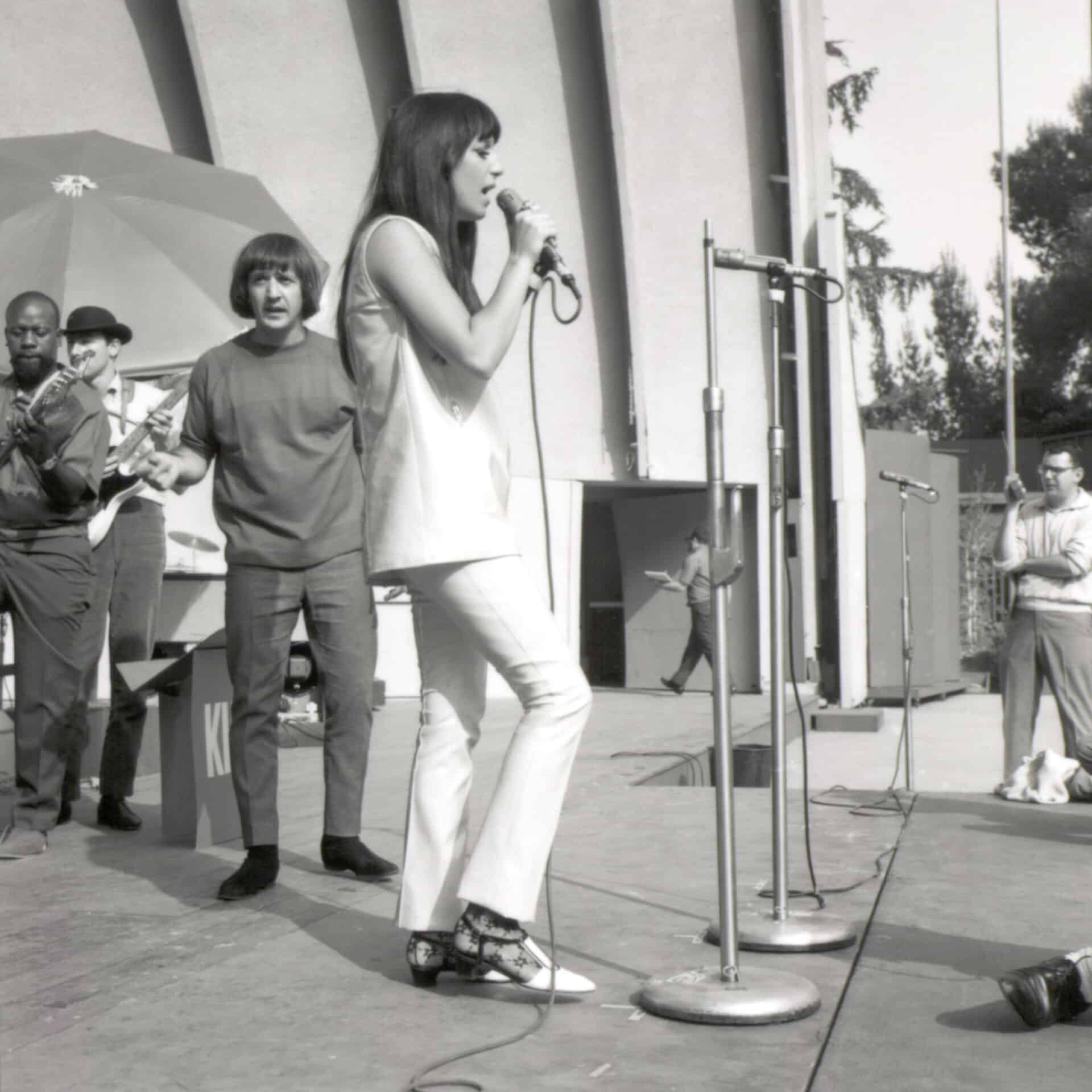
I Got You Babe: Sonny and Cher pictured during soundcheck at the Bowl in 1966. Now-promoter Andy Hewitt says he attended the show when he was 6 years old. (Photo by Earl Leaf/Michael Ochs Archives/Getty Images)
Major care goes into maintaining uniform design elements and preserving historic elements by important architects like Frank Gehry and Lloyd Wright Jr., said Ladd.
Historical preservationists had a lot to say about the 2004 changes when they were proposed, and court challenges delayed the project, but input was taken into account and most stakeholders are happy with the results, he said. Improvements and maintenance are constant to keep the amphitheater up to date, Connelly and Ladd said.
The shell replacement, done over nine months during the 2003-04 offseason, was a nine-year project, according to Ladd.
The expanded stage has a 50-foot diameter turntable that unlike the old one sits flush and rotates more than 180 degrees for on the fly set changes or to introduce one band as the other plays off. The turntable almost didn’t make it into the renovation, but a donation paid for it, Ladd said.
The shell features an acoustic halo that projects amplified sound down to orchestral performers — it’s not used for rock shows — and has sound-absorbing panels that were fabricated off-site in a Hughes Aircraft hangar in Playa del Rey, Ladd explained. There are also Modex Module acoustic panels on the sides of the shell.
“The big things we worked on this past season were a lot of production upgrades,” Connelly said. “We have a brand new LED video system and video walls (two either side of the stage and two in the towers). We upgraded our LED lights in the (shell) rings because they do lose their luster a bit over 10 to 15 years.”
A system was added to mitigate sound getting into the neighborhood, where REM’s Mike Mills and DJ Paul Oakenfold reside.
The bowl’s seat benches were replaced in 2016, with much wood repurposed elsewhere on the property. Some was even used to make a Gibson guitar, according to Ladd, who said the wood, sourced in Canada, is maintenance free, lasts about 30 years and costs about $100 per seat. Previous replacements were in 1958 and 1981.
“We also repainted the shell and it looks brand-spanking new and sparkling for our centennial,” Connelly said. “Over the years, we’ve re-designed and completely constructed a whole new midgate and box office plaza. We’re constantly looking at ways to keep the venue looking magnificent, make sure we are up to date with technology and have the best possible systems that we can get for the venue.”
HOT TICKETS HIGHLIGHTS:
First event reported:
Miles Davis
Sept. 25, 1981
Gross: $120,521
Tickets sold: 8,141
Prices: $7.50-$17.50
Promoter: Feyline
Most recent event reported:
Halsey
June 21, 2022
Gross: $1,225,330
Tickets sold: 14,607
Prices: $29.50-$129.50
Promoter: Live Nation-Hewitt Silva
Highest grossing event reported:
Dave Chappelle
April 28-May 3, 2022
(four shows)
Gross: $9,705,936
Tickets sold: 65,153
Prices: $35-$645
Promoter: Live Nation-Hewitt Silva
Largest attendance reported:
Depeche Mode
Oct. 12-18, 2017 (four shows)
Tickets sold: 65,808
Gross: $7,446,382
Prices: $39.50-$250
Promoter: Live Nation-Hewitt Silva
Largest attendance reported
(by decade): 1980s
Elton John
Sept. 23-25, 1988 (three shows)
Tickets sold: 53,143
Gross: $1,054,383
Prices: $17.50-$35
Promoter: Avalon Attractions
1990s
Walt Disney’s Symphonic Fantasy
June 18-21, 1993 (three shows)
Tickets sold: 34,753
Gross: $770,409
Prices: $3-$50
Promoter: Andrew Hewitt & Bill Silva Presents
2000s
Roger Waters
Oct. 5-8, 2006 (three shows)
Tickets sold: 50,321
Gross: $4,484,902
Prices: $36-$260
Promoter: Andrew Hewitt
& Bill Silva Presents,
Live Nation
2010s
Depeche Mode
Oct. 12-18, 2017 (four shows)
Tickets sold: 65,808
Gross: $7,446,382
Prices: $39.50-$250
Promoter: Andrew Hewitt & Bill Silva Presents,
Live Nation
2020s
Dead & Company
Oct. 29-31, 2021 (three shows)
Tickets sold: 50,881
Gross: $5,026,429
Prices: $51.50-$177.50
Promoter: Live Nation-Hewitt Silva
